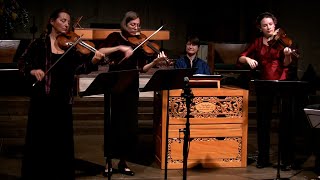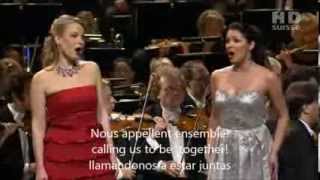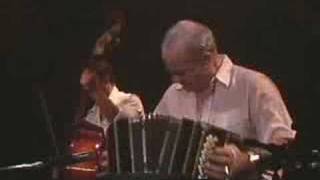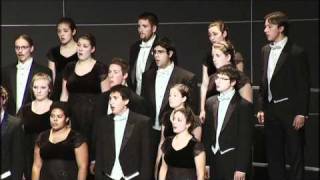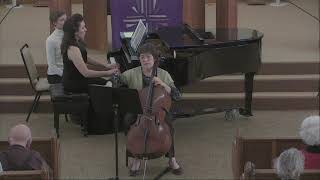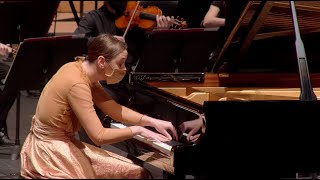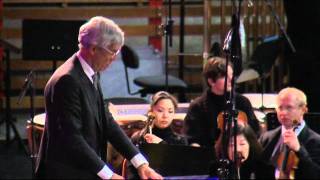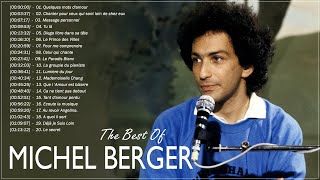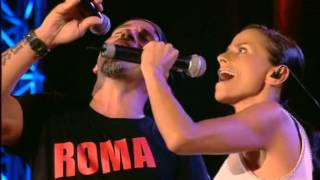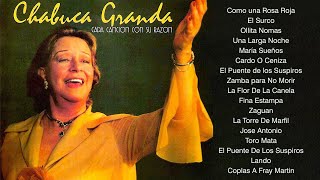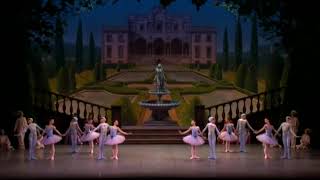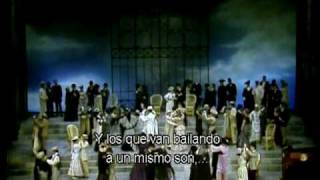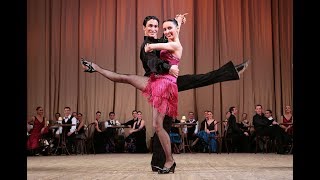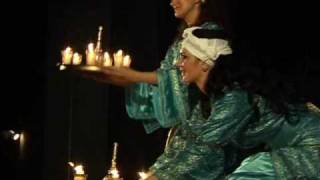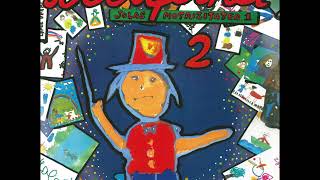Recommended music videos for initiation to classical music
Johann Pachelbel (1653–1706) was a prominent German composer, harpsichordist, and organist of the Baroque period (1600–1750). He was among the most important musicians of the generation before Johann Sebastian Bach , whose father he was a friend of. In addition to composing a large number of sacred and secular works, he contributed to the development of the chorale prelude and fugue , earning him a place among the most important composers of the Baroque era . Pachelbel 's music was very popular in his own time, gaining many pupils and becoming a model for composers in southern and central Germany . Pachelbel favored a lucid, uncomplicated style, placing particular emphasis on melodic and harmonic clarity.
The Canon is a piece or section of a musical composition of a contrapuntal nature; it typically uses string instruments, based on imitation between two or more voices separated by a time interval. A vocal or instrumental part plays a melody, and a few bars later a second voice repeats that same melody exactly or by modifying its tonality or other aspects. More voices may participate in this process. The first voice is called dux, proposition , or antecedent , and each of the voices that follows it is called come, response , or consequent .
The Canon in D major is Pachelbel 's best-known work and was the only canon he ever wrote, although the term is actually relatively inaccurate because the piece is not strictly a canon; rather, it is a chaconne or a passacaille . Today, the work is very popular and has been the subject of numerous versions and recordings.
Today it is brought to us by the American Early Music Ensemble, Voices of Music .
Léo Delibes (1836 -1891) was a French Romantic composer. His mother was a musician and his grandfather an opera singer. His nephew Frédéric was the paternal grandfather of the Spanish writer Miguel Delibes . He began his musical studies at the Paris Conservatoire in 1847, where he was a student of Adolphe Adam . As a composer, he achieved real fame in 1870 with the success of his ballet Coppélia ; among his other ballets, Sylvia is also worth mentioning; the Pizzicato from this ballet is very popular, one of Delibes ' greatest hits. He also composed several operas and operettas, a mass, a cantata and occasional music for the theatre, such as dances and ancient airs. Today, he is considered one of the most important composers of the 20th century .
The Flower Duet (original French title: Duo des fleurs or Sous le dôme épais ) is a duet for soprano and mezzo-soprano from the famous opera Lakmé by Léo Delibes. Lakmé is set during the time of British India and the duet is performed in the first act, between Lakmé , the daughter of a Brahmin, and her maid Mallika , as they go to pick flowers near a river; it is a barcarolle made familiar to the general public by British Airways commercials. For today's performance, we are visited by two outstanding opera singers: the Russian soprano Ana Netrebko and the Latvian mezzo Elīna Garanča .
Ástor Piazzolla (1921–1992) was born in Mar de Plata , Argentina . At the age of three, he moved with his family to New York and at the age of thirteen, he met Carlos Gardel . Upon his return to Argentina , he received classes from Ginastera for six years while regularly attending the Café Germinal , where tango music was the order of the day. He formed part of various groups, in which his innovations were considered the killer of tango . With a certain dose of pessimism, he moved to Paris , where he contacted Nadia Boulanger, who made him believe in himself and in the possible conjunction of tango with classical music . He returned to Buenos Aires with such activity that in 1973 he suffered a heart attack; despite this, he continued with his compositions and recordings until 1990, when he suffered a thrombosis in Paris that he would not be able to overcome.
The bandoneon is a bellows-operated wind instrument, widely used in Argentina and Uruguay , due to its association with tango , although also with other genres such as chamamé, chacarera, zamba, chimarrita, or chamarrita and even with Creole waltzes and, of course, with milongas . It was initially designed in Germany as an evolution of earlier loose-reed instruments. It is said that its initial use was as a portable organ for playing religious music; upon arriving in the Río de la Plata with sailors and immigrants, it was adopted by musicians of the time and thus contributed to the formation of the particular sound of the Río de la Plata tango , becoming a true symbol of it.
The Four Seasons of Buenos Aires , also known as Estaciones Porteñas , are a set of four tango compositions written by Piazzolla . He originally conceived and treated them as separate compositions rather than a suite, and over time they were released on different albums. However, Piazzolla did occasionally perform them together. The pieces were written for a quintet consisting of violin, piano, electric guitar, double bass, and bandoneon. The adjective porteño , a demonym for Buenos Aires , is used by Piazzolla to convey his impression of the seasons in Buenos Aires .
Today we present Otoño Porteño, offered by this mixed quintet with maestro Piazzola on the bandoneon; we are referring to the Piazzola Quintet .
Javier Bello Portu . Conductor and composer, who was born in Tolosa, Gipuzkoa, in October 1920 and died on February 13, 2004, at the age of 83. He completed his secondary and music studies in his hometown, with Eduardo and Ignacio Mocoroa. In 1959 he moved to Paris to study orchestral conducting; in the summer of that same year he attended courses at the Chigacademican Academy in Siena ; in Salzburg he continued his conducting course under the direction of Karajan, Dixopoldo and Salzopol . In 1963 he was appointed conductor of the Santa Cecilia Orchestra in Pamplona and was also director of the San Sebastián Symphony Orchestra . Notable among his written works are, among others, the Symphonic Suite for the Carnival of Lantz , the Tears of Zalacain , the choral triptych Pays Basque and several religious pages. He also created around fifty choral music compositions, the Basque Country choral trilogy and several religious works.
In 2000, the Tolosa Choral Competition paid him public tribute, where he was commissioned to pay homage to the bard from Urretxu, Iparragirre , choosing three of his works, which he combined admirably: Hendaian nago... Esan naute and Agur nere biotzet... At that 2000 competition in Tolosa , all the mixed-voice groups performed Une Vielle Chanson d'amour and Mendekoste Phestetan , composed by Bello Portu in 1946 and 1948. On May 29, 2004, at the Azkoiti Town Hall , he received a posthumous tribute from the Association of Friends of the Basque Country . (Extracted from the article by Auñamendi Eusko Entziklopedia)
Today the University of Delaware Chorale presents Une vieille chanson d'amour , which is a traditional Basque song with French lyrics and harmonized for mixed voice choir by Javier Bello Portu .
Recommended classical music videos
Marc-Antoine Charpentier (1643 – 1704) was a French composer of the Baroque period. A prolific (551 works) and versatile composer, he is best known for his " Te Deum " H.146 (in the key of D major), whose rondo-like prelude has served as the opening and closing theme music for television programs distributed through the Eurovision Song Contest and is especially known for being the opening and closing piece of the Eurovision Song Contest and the Vienna New Year's Concert . It was his acquaintance with the music of Giacomo Carissimi in Rome , where he was studying painting, that inclined Charpentier 's vocation towards the art of sounds. A disciple of this Italian master, on his return to Paris in 1672 Molière took him on as a composer for his theatre company, which earned him the enmity of the influential Jean-Baptiste Lully , who until then had been the playwright's most direct collaborator. In 1679 he was appointed Kapellmeister to the Dauphin, a post he lost following opposition from Lully . In his work, Charpentier achieved a synthesis of Italian and French traditions, particularly in the field of sacred vocal music, to which his famous Te Deum belongs. He also excelled in opera, a field in which he left titles such as Les arts florissants (1673), Actéon (1690) and Medée (1693).
Hugh Wiley Hitchcock has produced a thematic catalogue of the work of Marc-Antoine Charpentier ( H. Wiley Hitchcock, Les œuvres de Marc-Antoine Charpentier, Paris, Picard, 1982 ). References in this catalogue are preceded by the letter H .
Marc-Antoine Charpentier 's Te Deum is a polyphonic motet consisting of ten numbers. It is written in the key of D major and requires for its performance an ensemble of eight vocal soloists, a choir, and instrumental accompaniment with organ (basso continuo), which can vary depending on the arrangement chosen by the different conductors performing the work. The work was probably composed between 1688 and 1698, during his stay at the Jesuit church of Saint-Louis in Paris , where he served as music director. The work is written for a group of soloists, choir, and instrumental accompaniment. Charpentier is said to have written six different settings for his Te Deum , although only four of them survive. It is believed that Charpentier composed or at least performed this piece for the celebration of the victory at the Battle of Steinkirk in August 1692.
Today we attended the performance offered by the Les Arts Florissants ensemble, conducted by its principal conductor, maestro William Christie .
Hélène Liebmann (née Riese : 1795 – 1869, was a German pianist and composer. She was born in Berlin and studied music with Franz Lauska and Ferdinand Ries . A child prodigy, she made her debut before the age of 13 and published her Piano Sonata at 15. She married around 1814 and may have moved with her husband to Vienna and then London . She was present at a concert by Clara Wieck ( Schumann ) in 1835. Liebmann composed songs, sonatas and piano works. Notable works of hers include: Grand Quartet, Op. 13 , Grand Sonata, Op. 11 ( Grande Sonate pour Pianoforte et Violoncelle ), Kennst of the Earth? Op. 3, Violin Sonata Op. 9
Today we present the Sonata Op. 11 (Grand Sonata for cello and piano) performed by the mother-daughter duo, cellist Cecylia Barczyk and pianist Elizabeth Borowsky ; a sonata structured in the three movements typical of its time: I ALLEGRO (4'23") .-. II ADAGIO MA NON TROPPO (13'36") .-. III ANDANTE CON VARIAZIONI sul "La ci darem la mano" di Mozart (18'22")
Ludwig van Beethoven (1770-1827), along with Bach and Mozart, is part of the trio of giants of Western music. Born on December 16, 1770, in Bonn, his father, of Flemish origin, attempted to showcase him as a second Mozart, although this was a notable failure. Despite this, from the age of nine, the organist Christian Gottlob Neefe captivated him with the study of Bach, whom he would always remember. In 1787, he moved to Vienna with the intention of taking Mozart lessons, but his mother's death brought him back to Bonn a few days later. After five years, he returned to Vienna where he was able to study with Haydn and Salieri. However, his profession as an excellent pianist could not be realized due to the deafness that struck him the following year, leaving him completely incapacitated.
Beethoven's musical legacy includes 32 piano sonatas, numerous works for chamber ensembles, piano and violin concertos, incidental music, sacred music, and, above all, nine symphonies that mark the pinnacle of musical history. To better understand this legacy, we can divide it into three stages of continual renewal and improvement: A) Until 1802. Classicalism. This period includes his first ten piano sonatas, first six string quartets, the septet, the first two symphonies, and the first two piano concertos. B) 1803-1814. Romanticism. At the height of his artistic maturity and with absolute control of formal structure and lyricism, he composed the symphonies from the 3rd to the 8th, his opera Fidelio, his 3rd, 4th and 5th piano concertos, the violin concerto, the triple concerto, the piano sonatas “Moonlight”, “Appasionata”, the Kreutzer Violin Sonata, etc. C) 1815 until his death. Innovation of a more intense language with more daring harmonic and structural treatments: five late piano sonatas and five late string quartets, Symphony No. 9 with the addition of soloists and choir, Missa Solemnis…
Piano Concerto No. 1 Op. 15. The composition of this piece developed from initial sketches in 1793 to the finished autograph score dating from late 1794 or early 1795. Beethoven later revised the score several times; once before April 1800 and the solo part before March 1801. Piano Concerto No. 1 in C major was not his first, but actually his third attempt in this genre. He had previously written a Concerto in E-flat major that was never published (not to be confused with No. 5). Also earlier was the so-called Concerto No. 2 in B-flat major, which was actually composed about ten years earlier but not published until 1801. He spent so much time developing the Concerto in B-flat major, including an entirely new rondo, that the Concerto in C major preceded it in print and was therefore assigned the number 1. Like the Piano Concerto No. 2, this concerto reflects Beethoven's assimilation of the styles of Mozart and Haydn, while its abrupt harmonic shifts demonstrate Beethoven's unique personality.
The Concerto's structure is typical of a standard classical concerto style, with three movements in fast-slow-fast tempo. I. ALLEGRO CON BRIO. The first movement is written in the key of C major, in 4/4 time, and follows sonata form (exposition-development-re-exposition) with an added orchestral exposition, a cadenza, and a coda. II (15:58) LARGO. The second movement is in A-flat major, in 4/4 time, and adopts the ternary form (ABA) typical of slow movements. Its initial A section presents several themes that are developed in the central B section. The movement opens with a lyrical melody of great vocal expressiveness, an almost prayer-like moment that anticipates the profound slow movements of Beethoven's late period. III (27:12) RONDO. ALLEGRO SCHERZANDO. The third and final movement returns to the initial key, is in 2/4 time, and follows a seven-part rondo form (ABACABA), a common formula in the third movement of classical concertos. It is a Finale typical of much of Beethoven's music of the period: full of spirit, rhythmic syncopation, and irregular phrasing. Beethoven indicates two brief cadenzas, one just before the final return to the main theme and another immediately before the closing of the movement.
Judith Jauregi (born in 1985 in Donostia, Gipuzkoa) is a Basque pianist, the youngest of three sisters. She initially began learning to play the violin but soon decided to take up the piano, like her sisters. At the age of 14, she began to travel alone and, moving away from the concept of the diva in classical music, brought classical music closer to young people. At 17, she obtained the Advanced Degree in Piano Teaching from the San Sebastián Conservatory of Music, having Cristina Navajas as her teacher. She also obtained the highest grade and was awarded the Honorary Graduation Prize. Later, she continued her studies at the Salamanca Conservatory with Claudio Martínez-Mehner and at the Richard Strauss Conservatory in Munich with Vadim Suchanov. Judith currently lives in Madrid and has a prolific career performing internationally. She has released her latest works on her own record label, Berli Music, and has combined poetry and classical music: in 2009, she created a show about Machado with the Ondarroa writer Kirmen Uribe, and in 2012 with the Chichon actor José Sacristán.
Today, accompanied by the Euskadi Orchestra, conducted by Valencian maestro Jaume Santoja, she offers us Beethoven's Piano Concerto No. 1, Op. 15.
Karlheinz Stockhausen (1928-2007) was a German composer, a pioneer in electronic improvisation, and widely recognized as one of the most influential musical creators of the 20th century . His innovative works were a reference for the following generations and continue to be so today. He studied music pedagogy, piano and composition in Cologne , as well as musicology, philosophy and Germanic language; meanwhile, he paid for his studies by working in a factory or as a parking lot guard. In 1951, he attended the Darmstadt summer courses where he came into contact with Webern and with the most avant-garde composers in Germany . He delved into dodecaphonism , serialism and aleatoric music. The following year he enrolled at the Paris Conservatoire to study composition with Milhaud and analysis with Messiaen , establishing a great friendship with Boulez . From 1953 onwards, his dedication focused on electroacoustic music . In 1954, he presented his first electroacoustic works while delving deeper into phonetics and acoustics . His reputation grew as his premiere contracts multiplied. He died in 2007 of a heart attack.
Gruppen is a work composed for three orchestras with three conductors; music written according to the rules of serialism , it is one of his most representative works. Serialism is a compositional technique derived from dodecaphonism (the twelve sounds that make up the octave appear successively according to a pre-established order) in which the predetermined series is also applied to other musical parameters (note duration, rhythm, timbre, dynamics, etc.). The three conductors today are Matthias Pintscher , Lucas Vis , and Paul Fitzsimon .
Recommended music videos for all tastes
Michel Berger (1947-1992) was a French pianist, singer-songwriter and artistic director. He was born on 28 November 1947 in Neuilly-sur-Seine , son of professor of medicine and nephrology Jean Hamburger and concert pianist Annette Haas . In 1974, he met singer France Gall with whom he began a professional and personal relationship. They married on 22 June 1976 and had two children. Michel Berger became known as a singer in the 1960s. In 1963, he made his first television appearance and released his first 45-record EP with the song D'Autres Filles . He then moved into production at EMI where he wrote for, among others, Bourvil ( Les Girafes ) in 1967, and for Vanina Michel . In 1972, he joined the record label Warner Music and produced Véronique Sanson 's first two albums. In 1973, he relaunched Françoise Hardy 's career by producing her album Message personnel . In 1974, he wrote La Déclaration d'amour for France Gall . He relaunched the singer's career and produced all her albums from 1975 onwards. On 2 August 1992, while on holiday in Ramatuelle with his wife and children, he died of a heart attack while playing a game of tennis.
Billie Eilish (2001) is an American singer-songwriter, born in Los Angeles (USA) to a family of artists. At the 2020 Grammy Awards, she received a total of six nominations, of which she won five, becoming the youngest artist to win the award. She also won the awards for Best New Artist , as well as Song and Record of the Year for " Bad Guy ", becoming the second artist in history to win all four categories on the same night. At the 2021 Grammy Awards, Eilish was awarded two awards: the Grammy Award for Best Song Written for Visual Media for her song "No Time to Die" and the Grammy Award for Record of the Year for her 2019 single "Everything I Wanted" .
Eros Ramazzotti (Cinecittà Est, Rome, October 28, 1963) is a renowned figure in the music scene; also known for his nasal voice, which has been his distinctive feature throughout his career. He has managed to sell more than 65 million records worldwide, making him the best-selling Italian male artist in the history of his country and, along with his compatriots Laura Pausini, Andrea Bocelli and Umberto Tozzi , one of the most prominent Italian artists worldwide. He is part of the Nazionale Italiana Cantanti , a football team made up of Italian singers, of which he has been president and captain, playing as a forward; he is a well-known Juventus fan. His album " In all senses " contributed greatly to his style and talent being recognized in Latin America .
Chabuca Granda (1920-1983) was a Peruvian singer-songwriter who composed numerous songs of Creole and Afro-Peruvian music . She collaborated with famous Peruvian musicians and performed throughout Latin America with songs such as La flor de la canela , Fina estampa , and others that earned her international recognition. She has influenced important Peruvian singers such as Juan Diego and her songs have been performed by important artists such as María Dolores Pradera , Joaquín Sabina , and Julio Iglesias . In 2017, her musical legacy was declared Cultural Heritage of the Nation .
Recommended peculiar videos
Riccardo Drigo (1846-1930) was an Italian conductor and composer born in Padua . After achieving some notoriety as both a conductor and composer, he moved to Saint Petersburg where he directed several operas and ballets. He remained in Russia for 40 years, writing several operas and ballets in collaboration with notable choreographers such as Marius Petipa , Lev Ivanov and Michel Fokine with whom he would collaborate closely.
Marius Petipa (1818-1910) was a French choreographer, ballet master and dancer, based in Imperial Russia ; with him the era of Romantic ballet ended and the era of the Grand Ballet Russe inaugurated. His notable works include Swan Lake, The Sleeping Beauty, The Nutcracker, Raymonda, Don Quixote, Paquita, Les millions d'Arlequin, La Bayadère , etc.
Les Millions d'Arléquin. It is a ballet created in 1900 by Marius Petipa to music by Riccardo Drigo . In it, Columbine , Cassandre 's daughter, is in love with Harlequin , but her father has other plans. His choice of groom for Columbine is the rich old Lèandre , but with Harlequin always around, Cassandre and his servant Pierrot must be on guard to keep the lovers apart. However, Pierrette , Pierrot 's wife, sympathizes with the couple and thwarts the plans of her husband and his master. In the end, love triumphs when the Good Fairy aids Harlequin by presenting him with a magical slapstick act that fulfills his every wish.
Today we offer the 2nd act reconstructed by A. Mishutin
Federico Moreno Torroba (1891-1982), born in Madrid , was one of the most vital and prolific zarzuela composers of the 20th century , as well as a music critic and composer of guitar pieces. Born into a family of musicians, he received his first lessons from his father , José Moreno Ballesteros , organist at the Iglesia de la Concepción , and from Conrado del Campo at the Madrid Conservatory . His composing career was directed towards the symphonic field, but he soon turned to zarzuela , composing some fifty titles. He affirmed his expressive style in the most traditional Spanish style, with direct and simple language, but of great formal elegance. In 1974 he took office as president of the General Society of Authors of Spain , which he held until his death.
Chotis is a musical and dance form originating in Bohemia . Its name derives from the German term Schottisch ('Scottish') and although it is a Central European social dance, in Vienna it was attributed to a Scottish origin. Various variants of schottisch survive in the Argentine, Austrian, Brazilian, Scandinavian, Spanish, Portuguese traditions... It became fashionable in almost all of Europe during the 19th century and spread to America . Chotis is a slow, tight dance that is usually performed by taking three steps to the left, three to the right, and then turning around. When the music changes, the couple must change the circular direction of the movement. The key to the whole process is in the feet.
In this video we offer the Chotis de la La Chulapona , a zarzuela in three acts by the Madrid maestro Moreno Torroba , performed on this occasion by the Choirs of the Teatro Lirico Nacional de La Zarzuela with the Madrid Symphony Orchestra under the baton of the Madrid maestro Miguel Roa .
Tango is a musical genre and a dance characteristic of the Río de la Plata region and its area of influence, but mainly of the cities of Buenos Aires (in Argentina) and Montevideo (in Uruguay). Six main musical styles left their mark on tango: Andalusian tango, Cuban habanera, candombe, milonga, mazurka and European polka . Tango revolutionized popular dance by introducing a sensual dance with an embraced partner that proposes a deep emotional relationship between each person and their own body and between the bodies of the dancers with each other. Musically, it usually has a binary form (theme and chorus) or ternary (two parts to which a trio is added). On September 30, 2009, UNESCO declared it an Intangible Cultural Heritage of Humanity.
Igor Moiseyev (1906-2007) was a Russian choreographer and dancer who studied at the Bolshoi Theatre Ballet , a company with which he worked and even directed acrobatic dances in Moscow's Red Square until 1930, when the Government placed a new dance company under his direction, which would be called the Igor Moiseyev Ballet , with which he would prepare nearly 200 choreographies. Currently, the Igor Moiseyev Ballet is one of the great ballet companies in the world that manages to synthesize the spontaneity of popular dances with the academicism of classical ballet.
Today we can enjoy this anthology of Argentine tangos choreographed by the Igor Moiseyev Ballet .
Morocco is a country of multiethnic groups with a rich culture and civilization. Throughout its history, it has received visitors from the east (Phoenicians, Jews, and Arabs), the south (inhabitants of sub-Saharan Africa ), and the north (Romans and Vandals), who have impacted Morocco 's social structure. Different types of religions also coexist in the country, such as Paganism , Judaism, Christianity , and Islam . Politically, and due to its origins, it is an Arab country belonging to Africa , although it is sometimes referred to as an Arab-Berber state and sometimes as an Arab state.
Folk dance in Morocco is a reflection of the country's rich cultural diversity, with Berber, Arab, African, and Andalusian influences. Among the most representative dances are Ahidous, Gnaoua, Chaâbi , and belly dancing (Raks al-Sharqi) .
Recommended music videos for children
Various Wikipedia articles have been used to write these texts.
The texts of Videomusicalis are written in Basque, Spanish and English.





